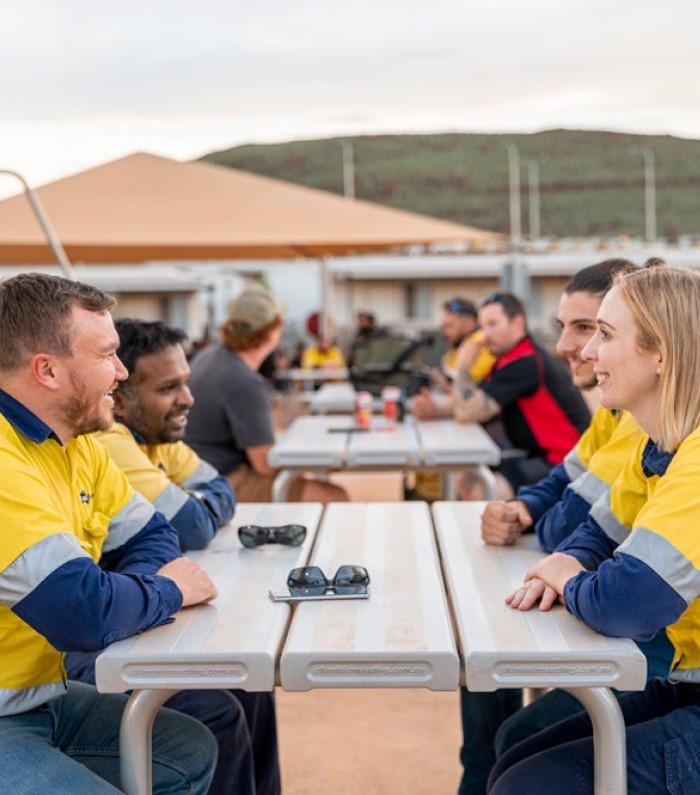Creating positive change through communication



Elizabeth Gaines, CEO, Fortescue Metals Group and CEW member
December 2021
Fortescue Metal Group’s fly in, fly out (FIFO) workforce lives and works on remote mine sites for up to two weeks at a time, extending the company’s responsibility to provide a safe and inclusive environment across accommodation and village facilities.
The recent allegations regarding sexual harassment at mining operations in WA and the subsequent WA Parliamentary inquiry, as well as the Commonwealth Government’s inquiry into the Sex Discrimination and Fair Work Amendment Bill, are setting the agenda for change.
An ear to the (remote) ground
Our culture is built on integrity and respect, and we encourage our team members to speak out against any behaviour that is not in line with this culture and our values. Fortescue has a zero-tolerance approach to harassment, bullying and intimidation, and harassment of any kind is considered serious misconduct and may be grounds for dismissal.
Our leadership team recognises that meaningful change for our team members in the Pilbara does not come from decisions that we, in Perth, make without consultation.
We launched a Workplace Integrity Review to encourage team members to provide feedback on what we could do as a business to further enhance the safety and security measures already in place.
The review included an online survey and focus group discussions across our operational sites, in addition to independently reviewing and assessing our current site security and safety measures.

"With team members based in remote areas, communication is one of our most important focus areas particularly on matters regarding health, safety and wellbeing."
Elizabeth Gaines, CEO, Fortescue Metals Group
We also made time to listen to our contracting partners, which have large numbers of people working across our sites at any given time, at a forum to discuss issues directly linked to sexual harassment.
The feedback, suggestions and ideas put forward throughout this review have created an action plan for both the short and longer term.
Expanding our communication channels
With team members based in remote areas, communication is one of our most important focus areas particularly on matters regarding health, safety and wellbeing.
Drawing on experience throughout the COVID-19 pandemic, we use a range of communication channels that extend beyond traditional emails and newsletters.
As part of a broader campaign to raise awareness and educate team members on important issues, a video series was launched to ensure each and every person working across a Fortescue site knows what behaviours are expected of them and how to raise concerns.
Text messages have proven effective to get these video messages straight to those who need them, no matter where they are located at any given time.
Most importantly, the video series features Fortescue team members – lending authenticity and relatability to the messages.
Foster diversity and inclusiveness
As an industry, we must and can do more to ensure we have a diverse workforce that is reflective of our community, and that we foster a workplace culture that truly embraces diversity and inclusiveness.
The industry has a long way to go in this regard. Fortescue has long advocated the benefits of diversity, and research continues to reinforce our view and experience that building a diverse workplace is not just the right thing to do, it’s the smart thing to do.
We remain focused on building a pipeline of aspiring female leaders and have a range of practical initiatives that help us recruit, retain and support the career development of women, including paid parental leave, flexible working arrangements and leadership development programs.
Keep an eye on the future state
As we look forward, it remains most important to us to keep the dialogue on workplace safety and wellbeing open, introducing practical initiatives that make people safer and maintaining an environment that empowers our team members to speak up for themselves and their workmates.
CEW has developed a range of resources to help leaders bring about real change in their organisations, and to track and eliminate sexual harassment.

With team members based in remote areas, communication is one of our most important focus areas particularly on matters regarding health, safety and wellbeing.
Elizabeth Gaines, CEO, Fortescue Metals Group

